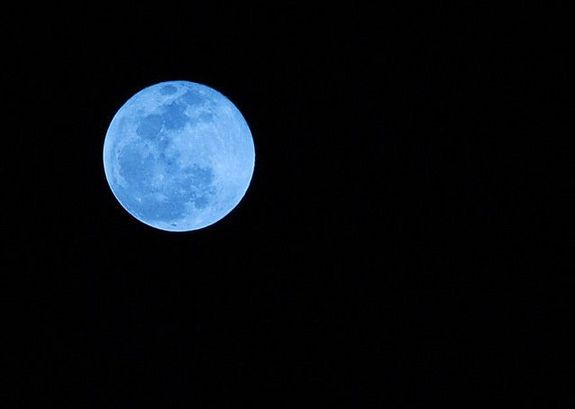Myth Busted: Does the Blue Moon Make Us Crazy?

With two full moons in August, the month would seem ripe for lunacy. But the idea that the moon contributes to madness is, fortunately, a myth.
Friday, Aug. 31 will feature a blue moon, the second full moon of the month, an event that happens every 2.7 years, on average. (The next blue moon won't occur until 2015.) This double full moon might seem like good reason to stay indoors, given that the full moon has been linked to odd behavior in legends both old (werewolves, anyone?) and new (cops and emergency room staff have been known to blame the full moon for wild nights). In fact, scientists have looked into the connection between lunacy and the moon, and they've found very little evidence to back it up.
Take, for example, emergency room visits. In 1996, researchers examined the history of more than 150,000 emergency room visits to a suburban hospital. They found no difference between full-moon nights and every other night of the month, they reported in the American Journal of Emergency Medicine. Other studies have tried and failed to find a link between the full moon and psychiatric emergency visits, epilepsy seizures and surgery outcomes. [Gallery: The Fantastic Full Moon]
Most likely, the urban legends that spring up about illness, madness and the moon are examples of what psychologists call confirmation bias — the very human tendency to remember information selectively. If you're an emergency room nurse having a busy night and you happen to notice that the moon is full, you're more likely to remember the link than on a busy night when the moon is waxing or waning.
So if humans aren't affected, how about animals? A 2007 study in the Journal of the American Veterinary Medical Association did find that more cats and dogs arrive at the veterinary emergency room at Colorado State University on full-moon nights. Cats had a 23 percent greater chance of requiring an emergency vet visit under a full moon than during other moon phases, while dogs had a 28 percent greater chance. The researchers couldn't say why the link existed, though it's possible that the full moon's brightness means more people are out and about with their pets on those evenings, increasing the risk of injury.
Other animal studies have been similarly confounding. A study published in the British Medical Journal in December 2000 found that one emergency room in Great Britain saw more animal bites on or around full-moon nights, but a study in the same issue of the journal that focused on Australia found no such link. Perhaps the werewolves of London haven't made it to Sydney.
Follow Stephanie Pappas on Twitter @sipappas or LiveScience @livescience. We're also on Facebook & Google+.
Sign up for the Live Science daily newsletter now
Get the world’s most fascinating discoveries delivered straight to your inbox.

Stephanie Pappas is a contributing writer for Live Science, covering topics ranging from geoscience to archaeology to the human brain and behavior. She was previously a senior writer for Live Science but is now a freelancer based in Denver, Colorado, and regularly contributes to Scientific American and The Monitor, the monthly magazine of the American Psychological Association. Stephanie received a bachelor's degree in psychology from the University of South Carolina and a graduate certificate in science communication from the University of California, Santa Cruz.









